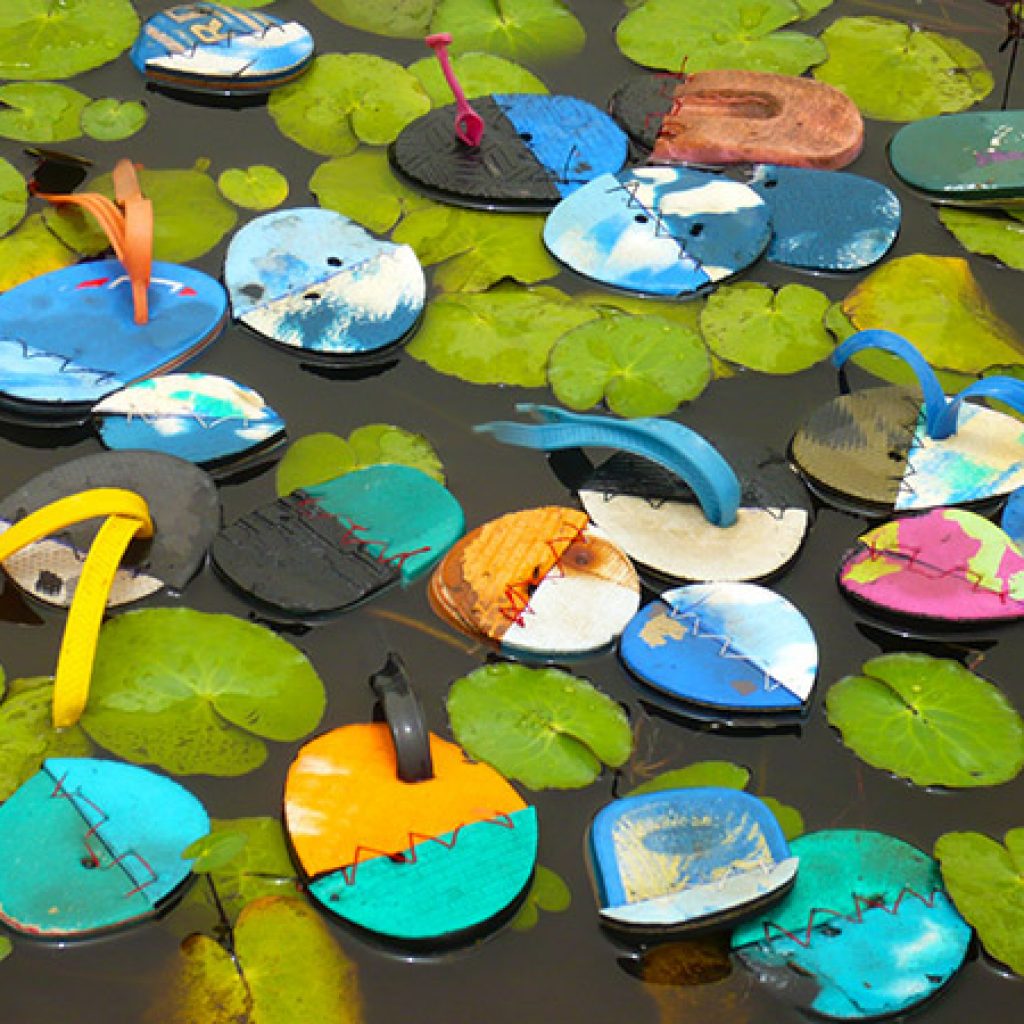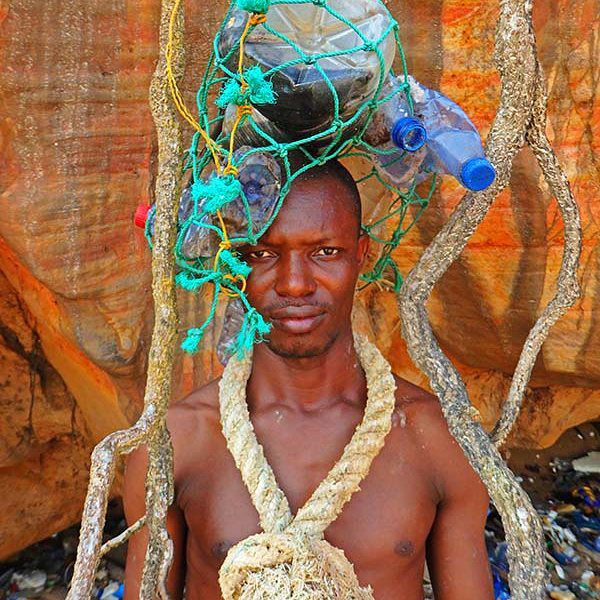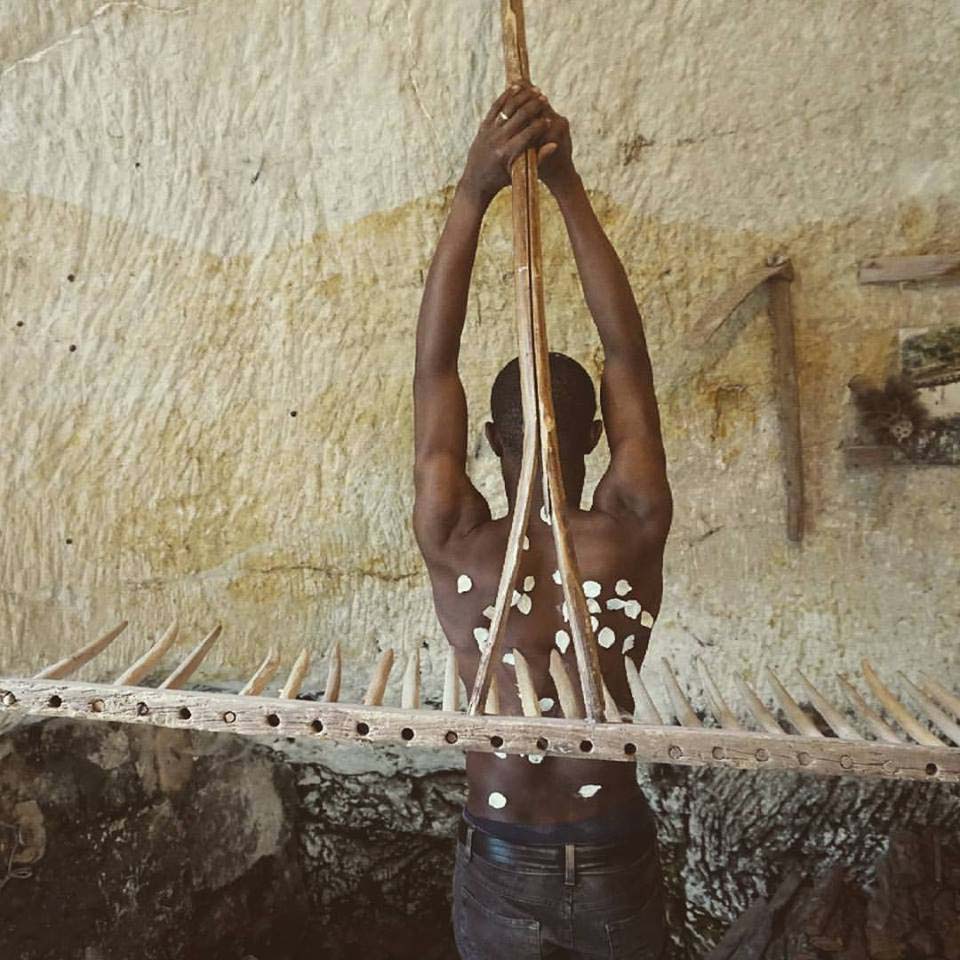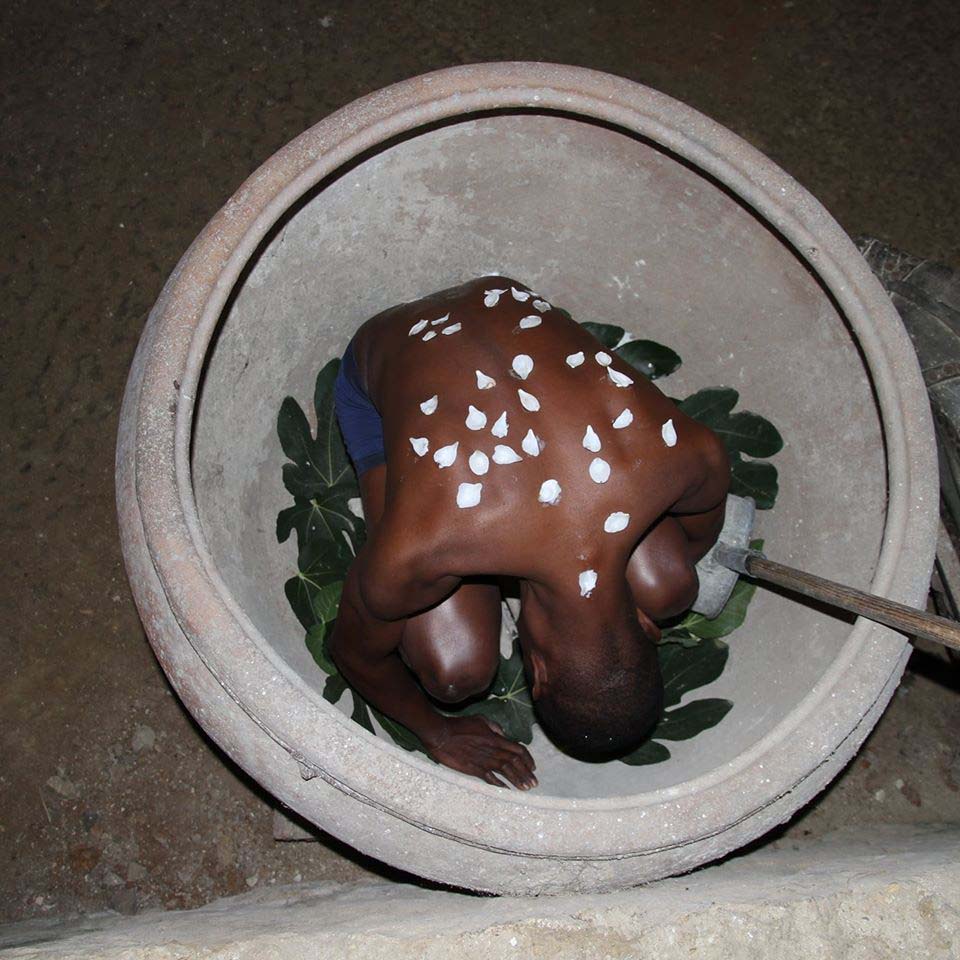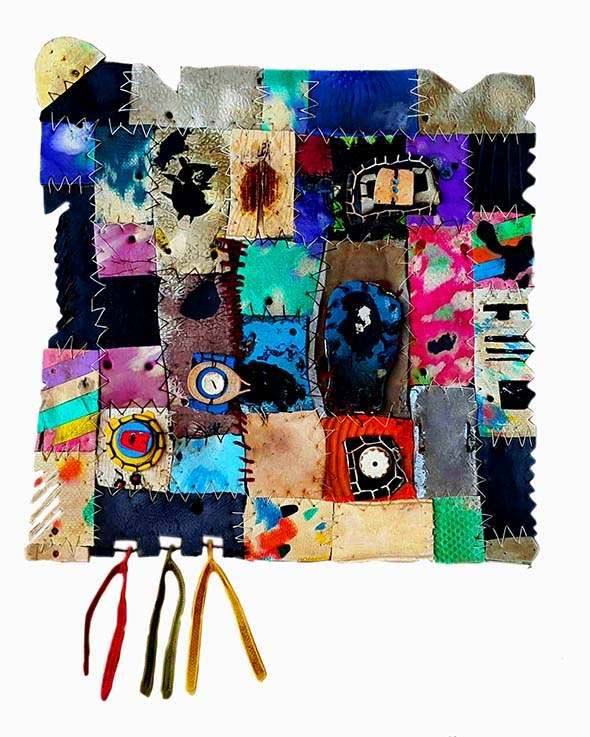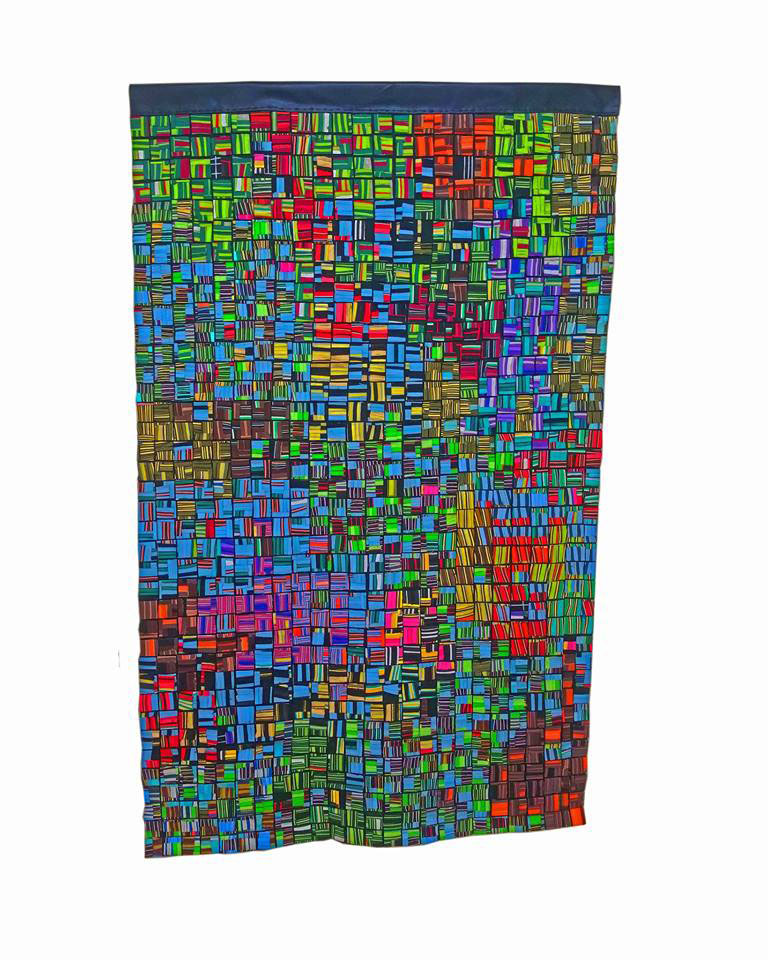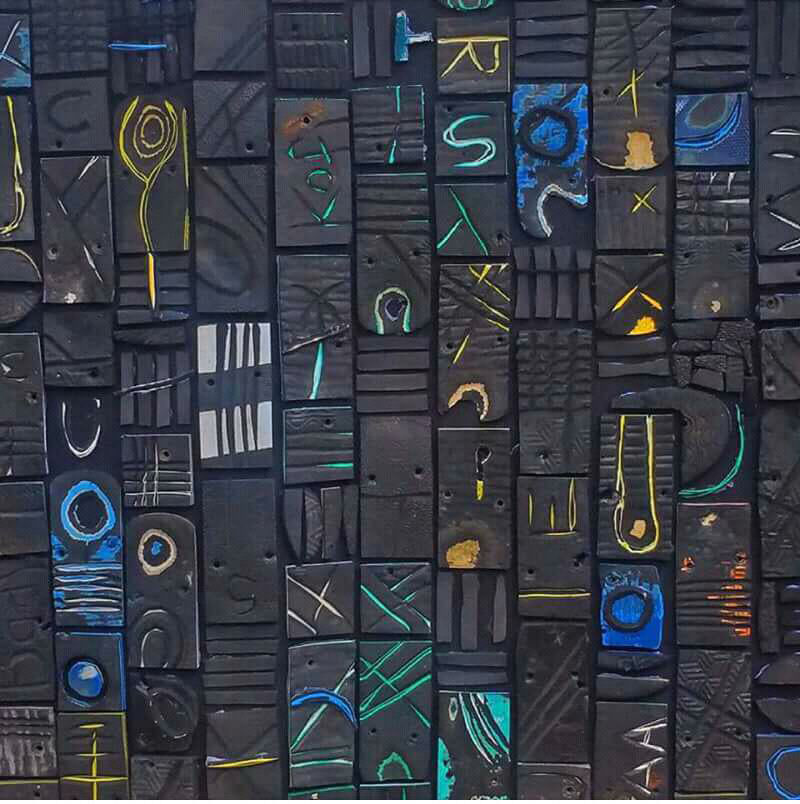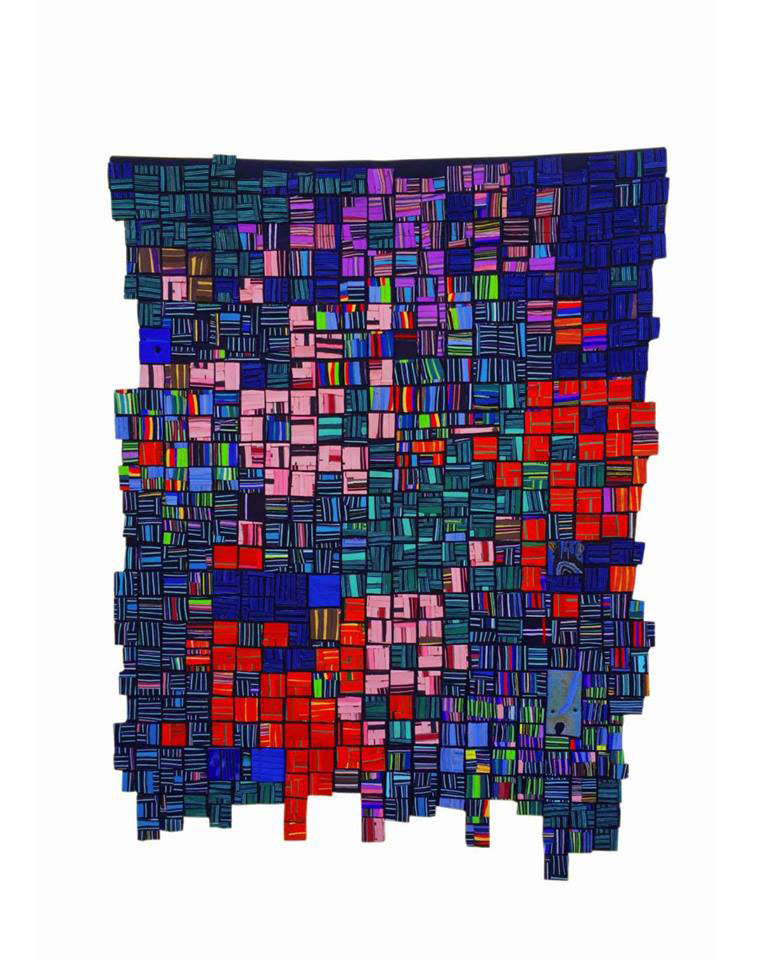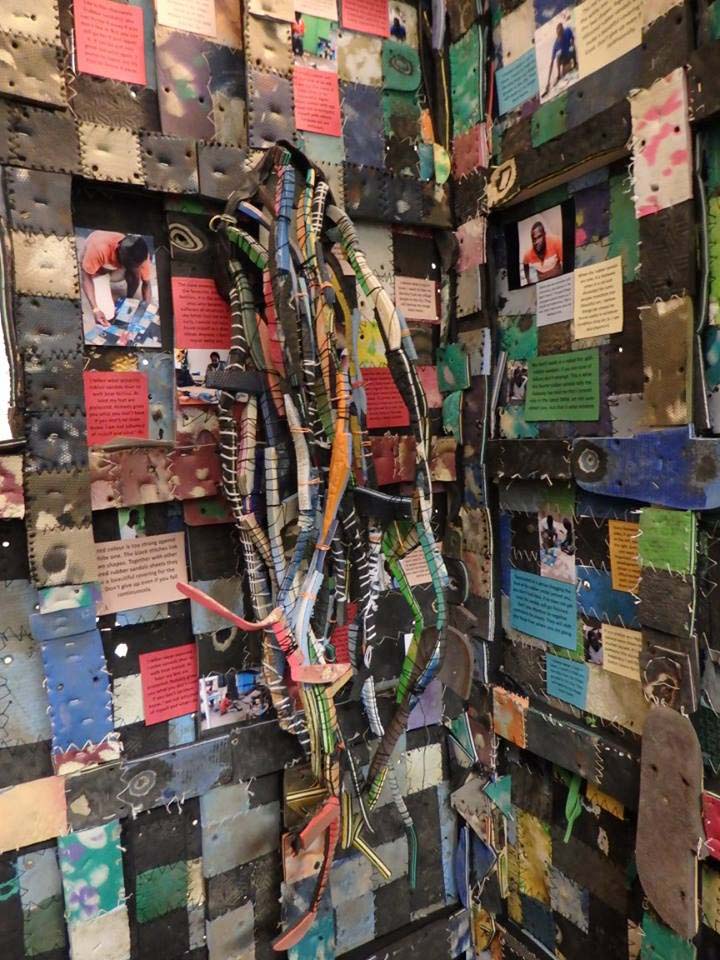Patrick Turkson’s artist profile,
by Naomi Middelmann.
Plastic Trash into Art Project: Patrick Turkson’s work is as vibrant in color as it is powerful in meaning. His process of working with found flip-flops and other found plastics and turning them into artworks (sculptures installations and performances), not only addresses the question of identity, memory, and waste but more importantly, Turkson’s process and work show us the role an artist and art itself can play within a community. Turkson’s art is not art for art’s sake, but art that aims to reclaim, transform and repair. He received his MFA degree in Painting at the Kwame Nkrumah University of Science and Technology in Kumasi, Ghana, and currently Senior Lecturer at Takoradi Technical University in Ghana. Patrick’s dedication to the environment afforded him the opportunity to participate in Global Nomadic Art Project (GNAP) in France in 2017.
HAF: Can you talk about the Memory Repair project?
Patrick: It was a two-year (2015 and 2016) collaborative art project between refugees and me in Ghana and refugees in Hamburg, Germany. The project had two components. In the “Tale Within Crossing: From Rubber Sandals to Kiosk,” 2015 I decided to use found flip-flops, collaborate with the flip-flop repairers and build flip-flops kiosks. Working with migrants, we first collected tons of drift rubber sandals from the beaches. We cleaned them to stitch them into sheets and transform them into art. This helped migrants from Ghana and other countries share their stories, obtain psychological support and to build shelters from used rubber sandals.
HAF: Share with us the second part that was a performance in Germany last year?
Patrick: Yes. That was called: Memory Repairs: “This is Not My Fault,” which was the Performance I did at the Frappant Gallery in Hamburg, Germany last year. Based on the memories of traumatic experiences and life of migrants in Ghana. I used some disconnected found flip-flops collected from several beaches as a metaphor for the complex global crises (migration) that has led to shattered lives and dreams.
HAF: Your work with the “Awaiting Project” sounds interesting Patrick. Tell us more about this.
Patrick: That series looked at the energy and natural compositional structures of plastics lying on the beach waiting for the next drift of sea waves. My interest was taking the plastic waste from our beaches and transforming it from into a monumental collaborative sculpture.
HAF: Can you talk about the environment project, GNAP that you participated in France last year?
Patrick: The Global Nomadic Art Project (GNAP) was founded by artists’ association Yatoo (http://yatooi.com/53612) in collaboration with other international nature artists groups. It took place in 2014 and 2015 in Asia and 2016 in Africa and the Middle East, in 2017 in Eastern and Western Europe and 2018 it will take place in America. Fifteen to twenty nature artists from all over the world participate in the project with local artists from selected countries. For 1 to 4 weeks, the artists work together in outdoor nature art workshops, provide indoor nature art exhibitions and publish documentation of their work. The objective is to encourage sustainable ecological practices and environmental conservation.
HAF: What projects are you currently working on?
Patrick: I am currently working with found flip-flops for Art X Lagos (www.artxlagos.com) in Lagos, Nigeria. I am represented by the Nubuke Foundation Gallery in Accra, Ghana. In this collection, I deliberately and painstakingly manipulate the found flip-flops into a vivid explosion of color. It reveals my obsession with contemporary issues such as ecology, memory, migration, and recovery by capturing and re-telling histories, dreams, and hopes. I am also working on part two of the Nature Flag Art Project with the Boitumelo Group in South Africa. The first part of the project was focused on creating personal flags, symbols, and identities with natural materials found within the immediate surroundings. The second part involves creating flags from found objects, using traditional crafts making methods such as stitching, nailing, tying and dying. “Where Are The Coconut Trees” (performance with found plastic and coconut stumps) is also an ongoing project which looks at the rampant fall and destruction of coconut trees on beaches in Ghana as a result of bad fishing practices.
Naomi Middelmann is a Swiss/American mixed media artist who is based out of Lausanne Switzerland. She has written for Spin magazine, Gear Magazine and writes for Wonderlust.


